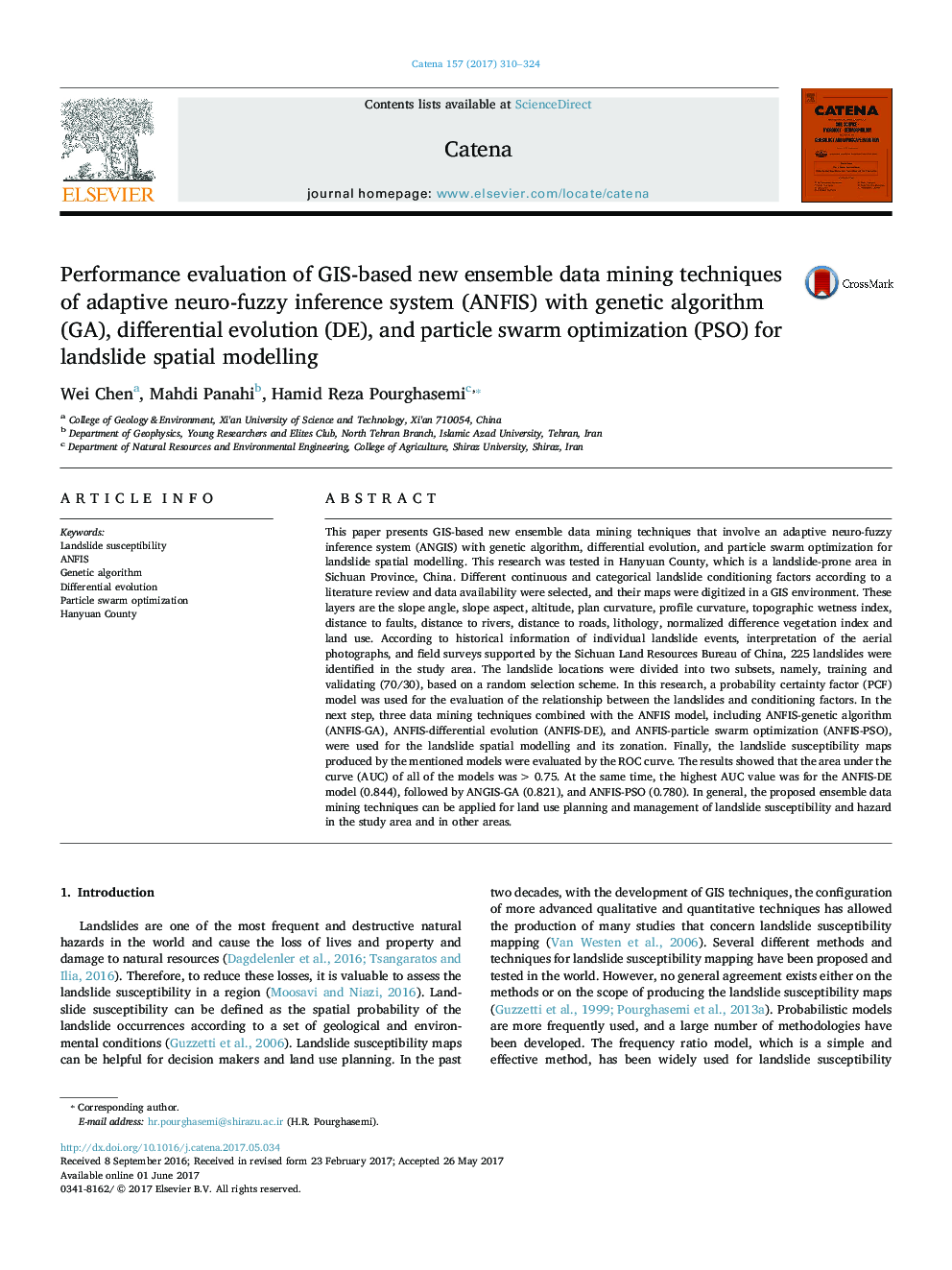| کد مقاله | کد نشریه | سال انتشار | مقاله انگلیسی | نسخه تمام متن |
|---|---|---|---|---|
| 5769868 | 1629197 | 2017 | 15 صفحه PDF | دانلود رایگان |

- ANFIS with GA, DE, and PSO for landslide spatial modelling.
- PCF method was used to evaluate the relationship between landslides and conditioning factors.
- ANFIS-DE model shows the best result in landslide prediction.
This paper presents GIS-based new ensemble data mining techniques that involve an adaptive neuro-fuzzy inference system (ANGIS) with genetic algorithm, differential evolution, and particle swarm optimization for landslide spatial modelling. This research was tested in Hanyuan County, which is a landslide-prone area in Sichuan Province, China. Different continuous and categorical landslide conditioning factors according to a literature review and data availability were selected, and their maps were digitized in a GIS environment. These layers are the slope angle, slope aspect, altitude, plan curvature, profile curvature, topographic wetness index, distance to faults, distance to rivers, distance to roads, lithology, normalized difference vegetation index and land use. According to historical information of individual landslide events, interpretation of the aerial photographs, and field surveys supported by the Sichuan Land Resources Bureau of China, 225 landslides were identified in the study area. The landslide locations were divided into two subsets, namely, training and validating (70/30), based on a random selection scheme. In this research, a probability certainty factor (PCF) model was used for the evaluation of the relationship between the landslides and conditioning factors. In the next step, three data mining techniques combined with the ANFIS model, including ANFIS-genetic algorithm (ANFIS-GA), ANFIS-differential evolution (ANFIS-DE), and ANFIS-particle swarm optimization (ANFIS-PSO), were used for the landslide spatial modelling and its zonation. Finally, the landslide susceptibility maps produced by the mentioned models were evaluated by the ROC curve. The results showed that the area under the curve (AUC) of all of the models was >Â 0.75. At the same time, the highest AUC value was for the ANFIS-DE model (0.844), followed by ANGIS-GA (0.821), and ANFIS-PSO (0.780). In general, the proposed ensemble data mining techniques can be applied for land use planning and management of landslide susceptibility and hazard in the study area and in other areas.
Journal: CATENA - Volume 157, October 2017, Pages 310-324